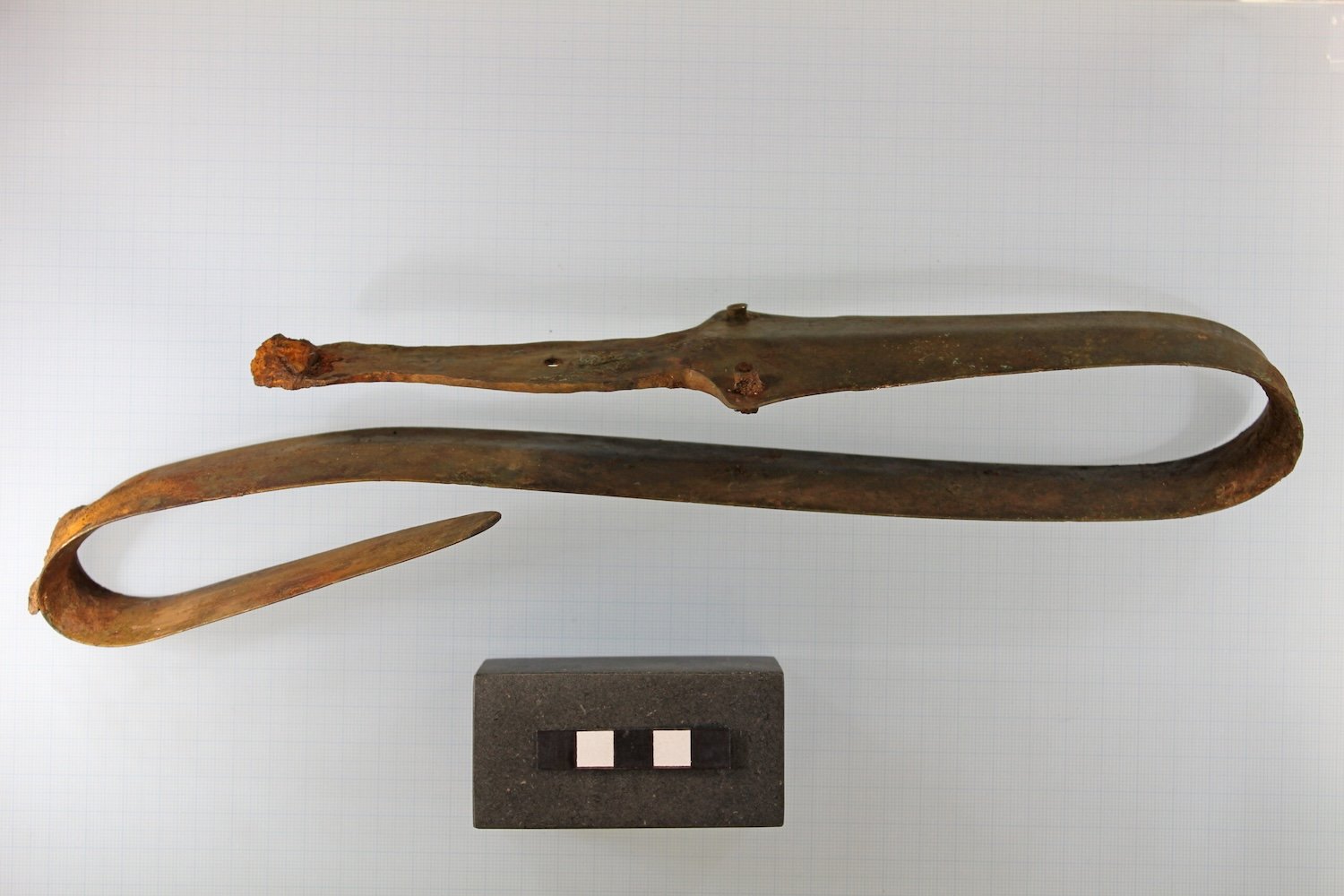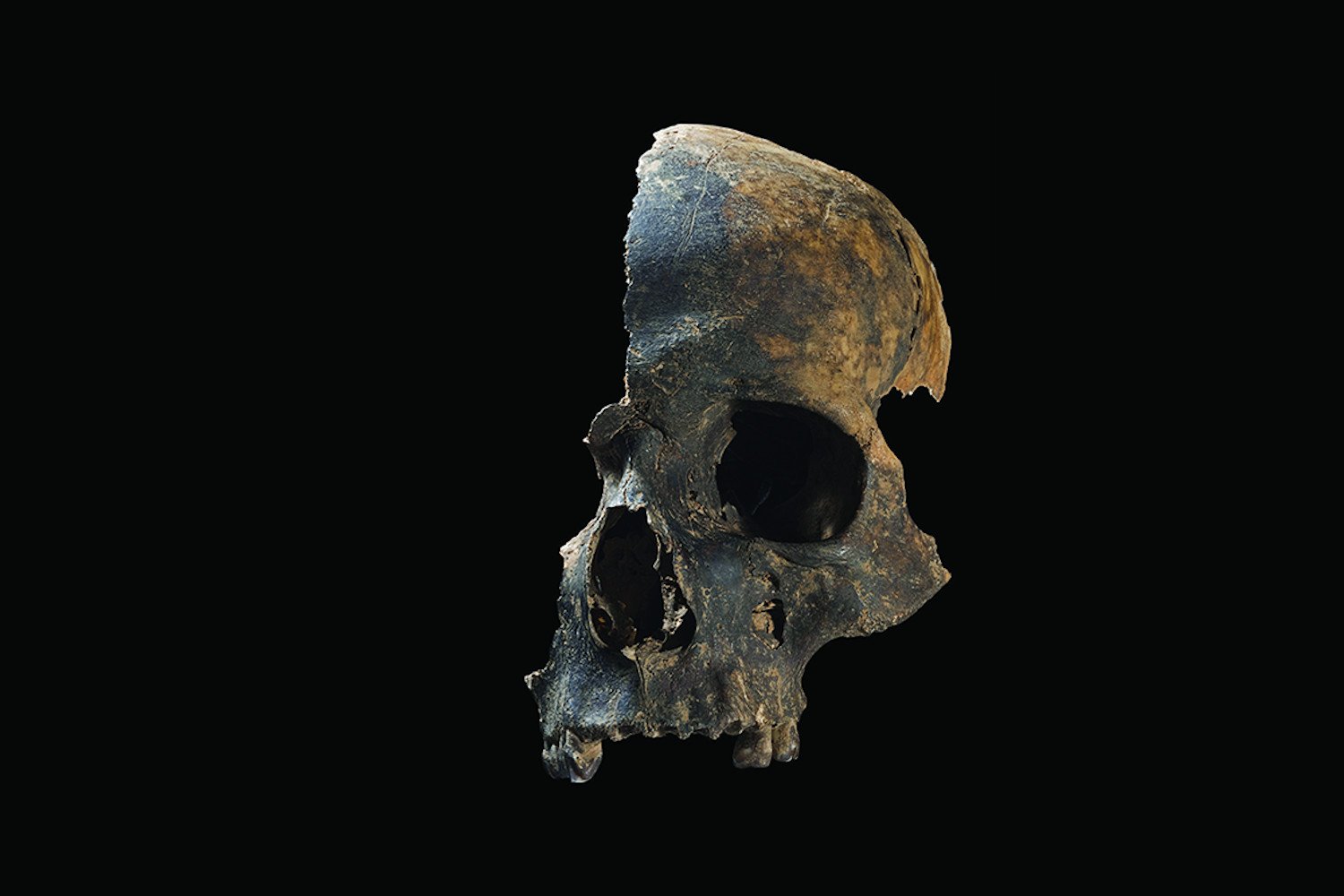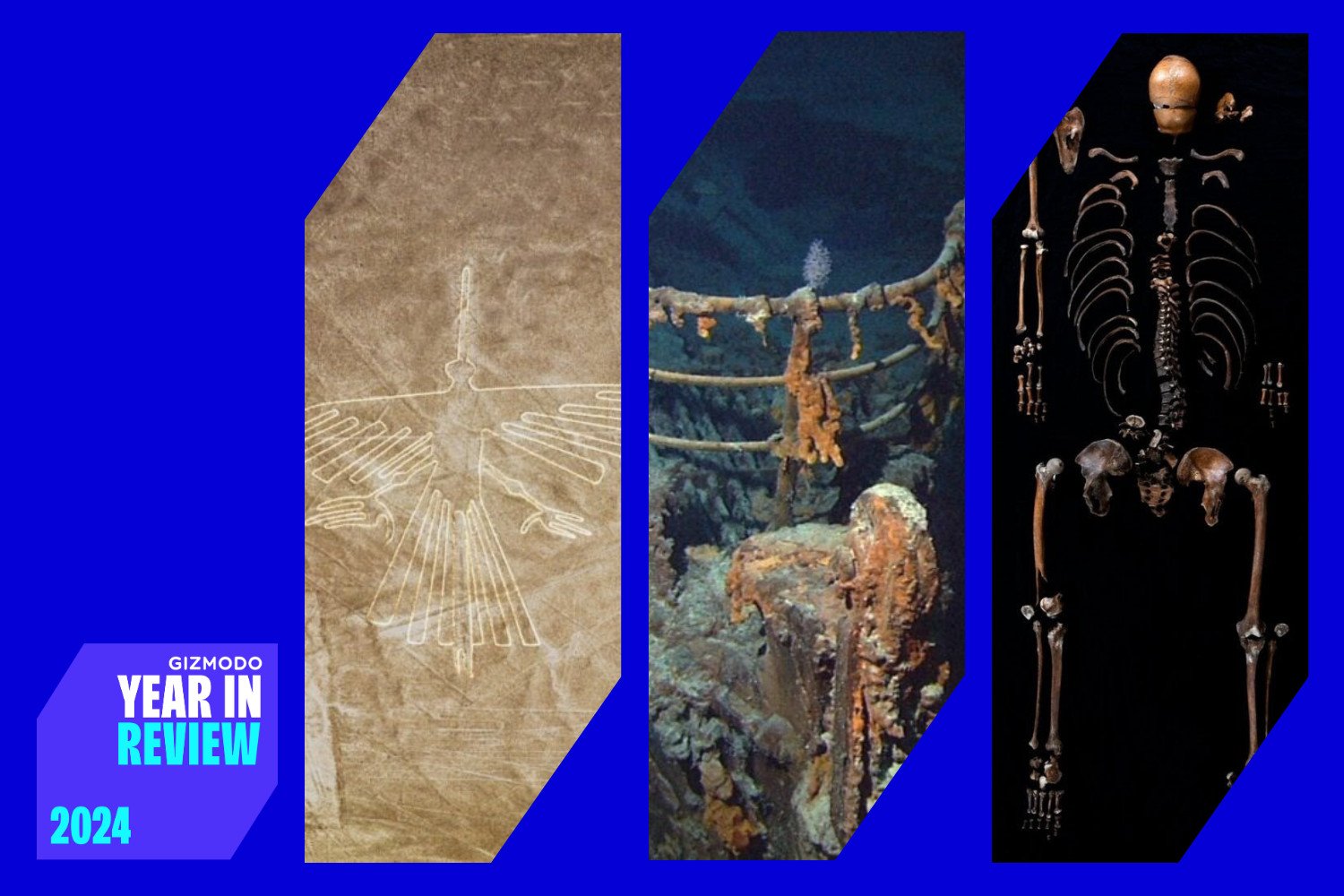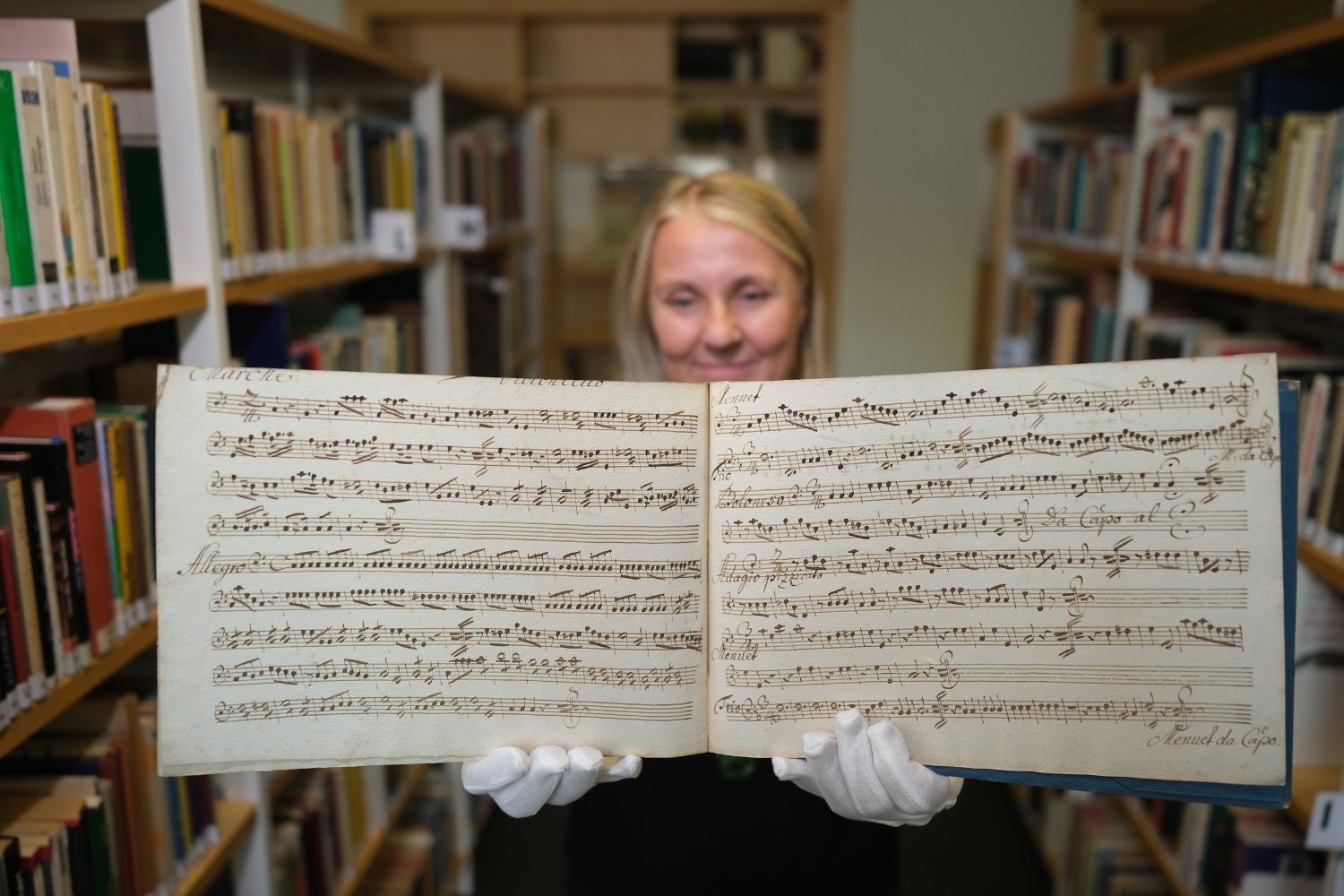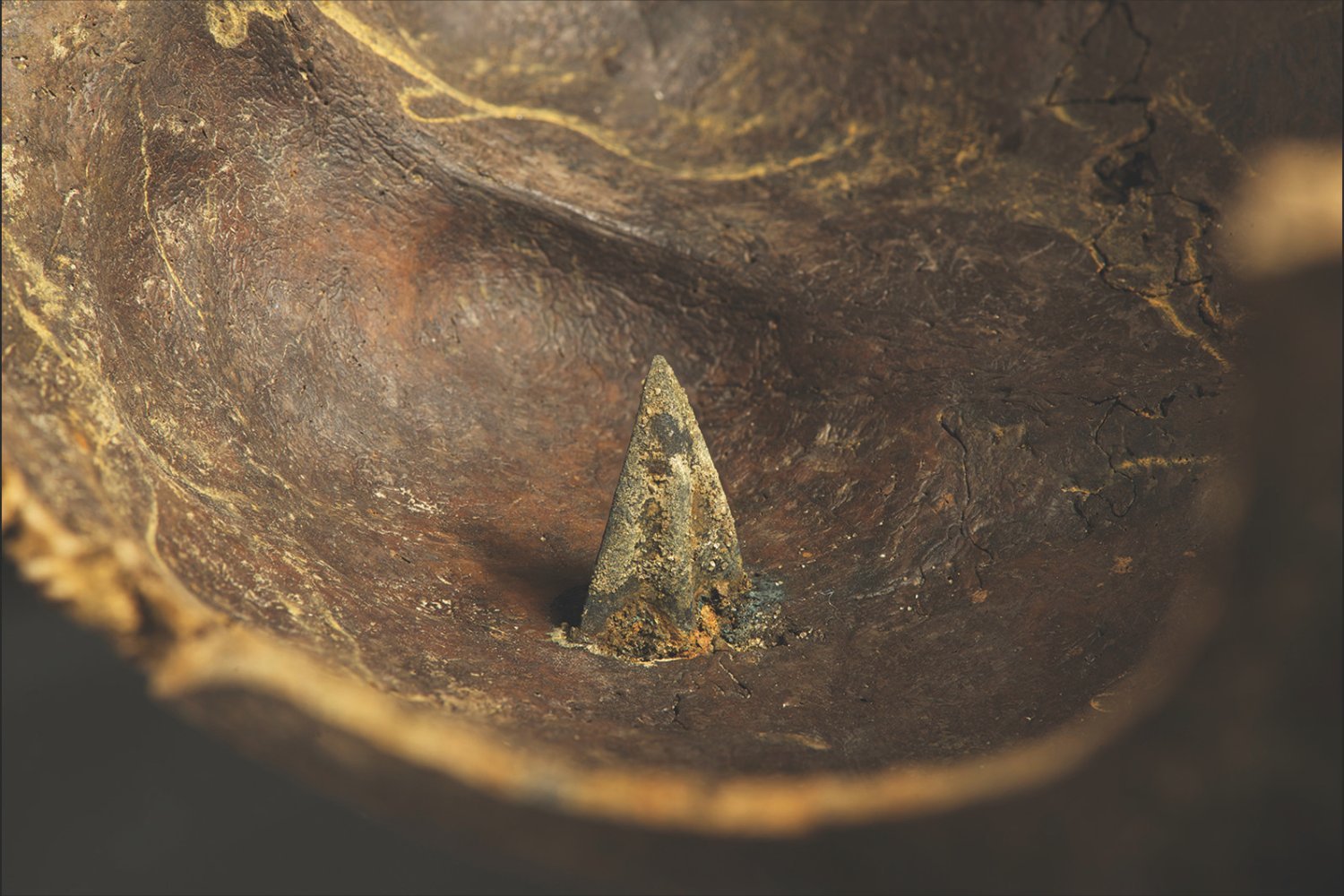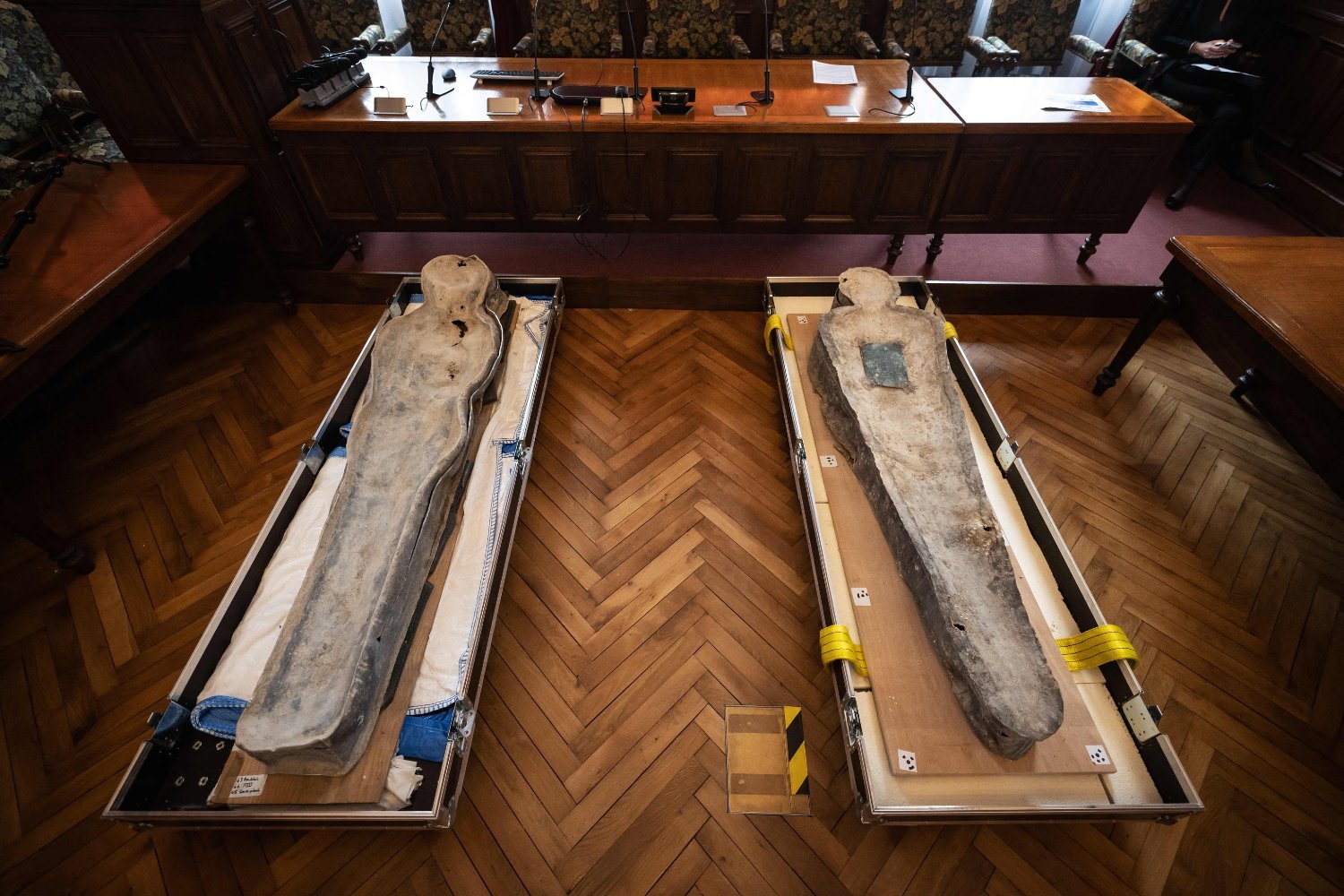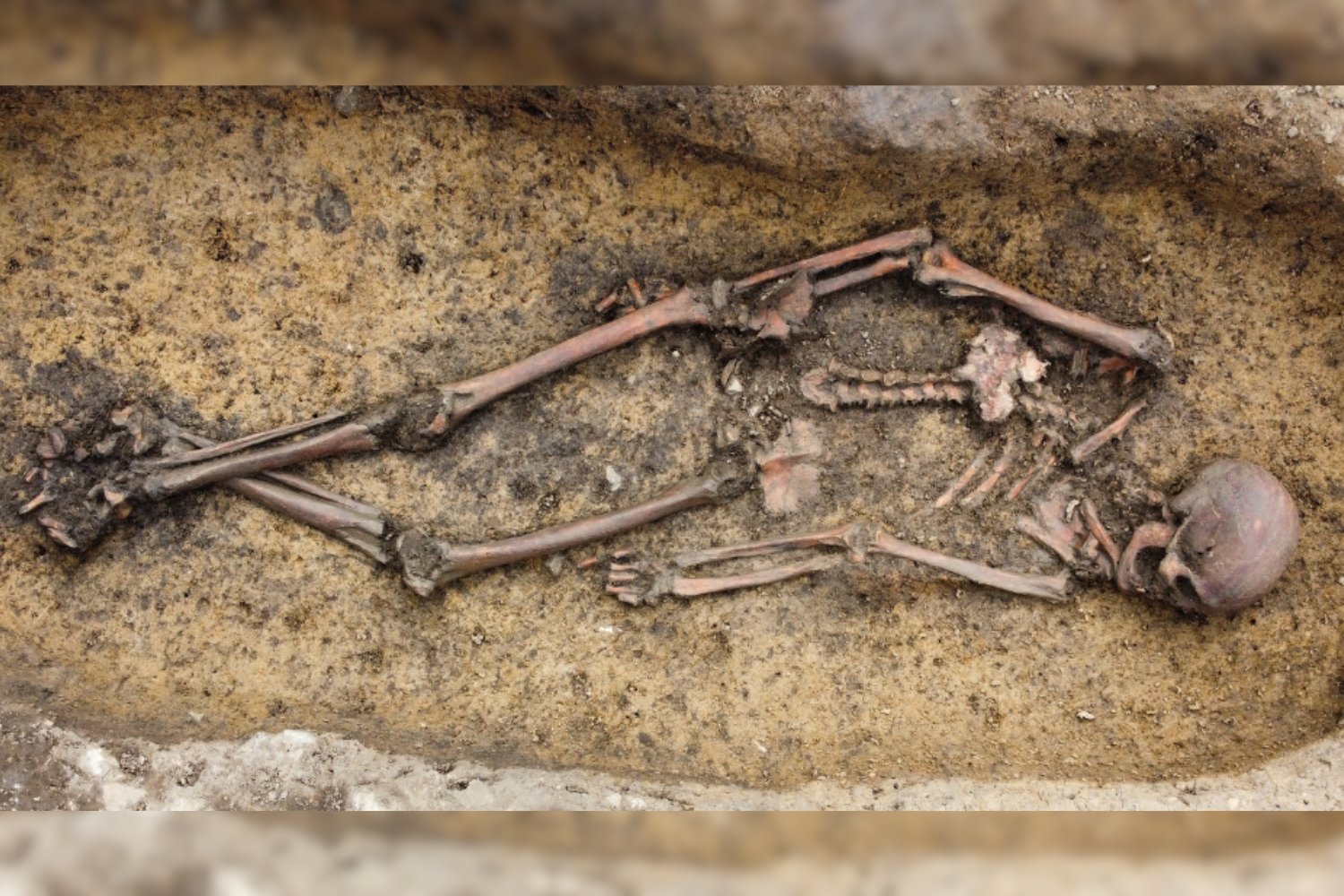A novice metal detectorist’s first two outings have yielded an astonishing collection of 2,500-year-old Late Bronze Age artifacts in Egedal, Denmark. This remarkable discovery, announced by the Danish museum ROMU, includes a ritually bent sword, a rare necklace, and other items offering valuable insights into the transition from the Bronze Age to the Iron Age in Northern Europe.
Claus Falsby, the detectorist, immediately contacted ROMU upon realizing the significance of his find. Archaeologists were dispatched to the site and confirmed the artifacts were part of a “depot”—a sacrificial offering. Among the unearthed items were a ritually bent sword, two small bronze axes, “ankle rings,” and a fragment of what might have been a clothing pin.
Remarkably, Falsby’s second venture, just days later and less than 231 feet (70 meters) from the initial discovery, proved equally fruitful. He uncovered a large, ornate bronze necklace—only the second of its kind ever found in Denmark. The ROMU archaeologists dated the entire collection, known as the Egedal find, to approximately 500 BCE, a period marking the region’s shift from the Late Bronze Age to the Early Iron Age.
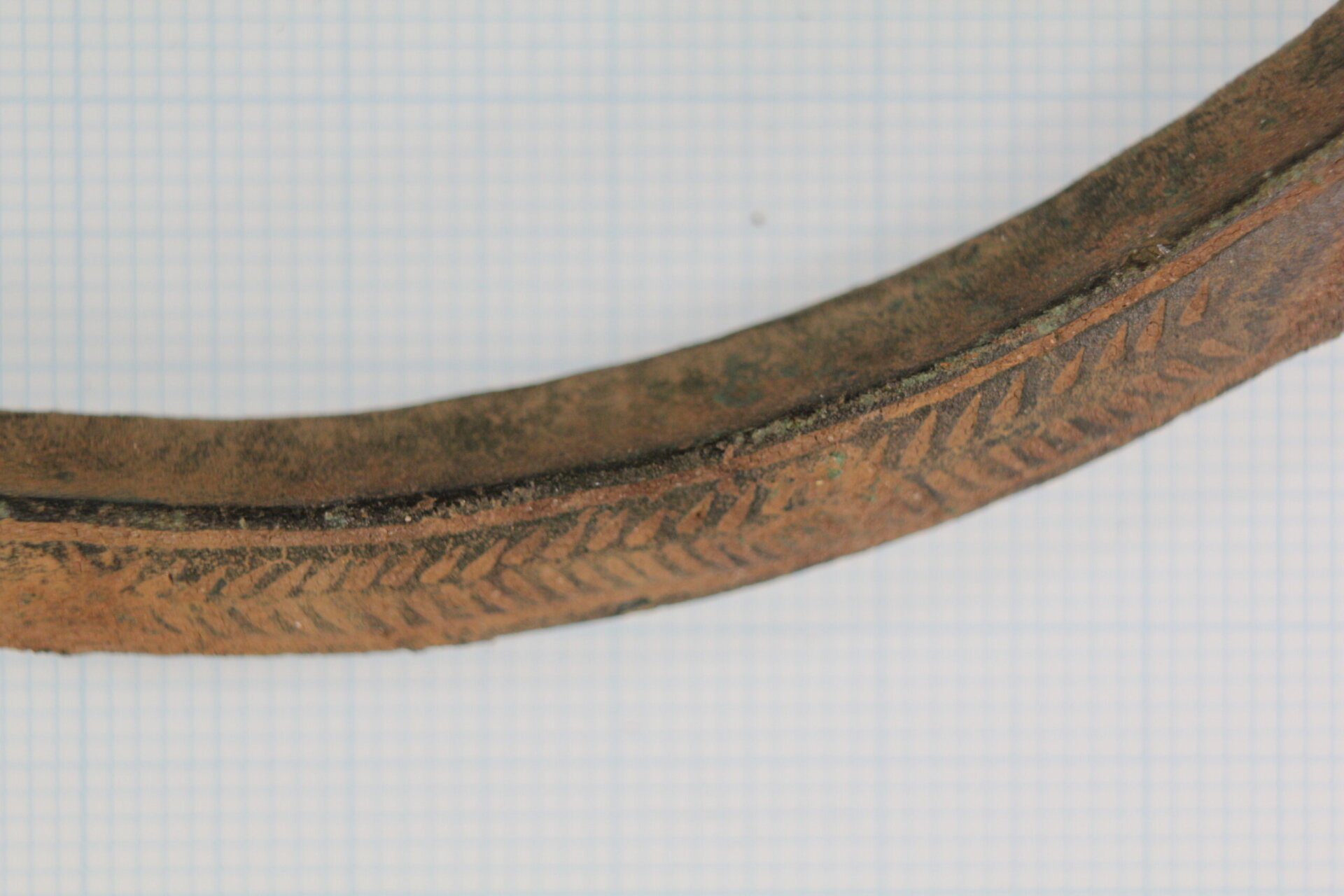 Bronze Necklace DetailThe intricate details of the bronze necklace. © Palle Østergaard Sørensen, ROMU.
Bronze Necklace DetailThe intricate details of the bronze necklace. © Palle Østergaard Sørensen, ROMU.
According to ROMU archaeologist Emil Winther Struve, “It’s a very rare find. We have many depot finds from the early and middle Bronze Age, but not so many from the latter part. The sacrificial tradition, so visible and dominant throughout the Bronze Age, seems to be receding at this point.”
The sword, made of bronze with iron rivets, is particularly significant. The rivets may represent the earliest known iron in Denmark. Bent into an S-shape before being offered, likely for ritualistic purposes, the sword’s design suggests it originated from the Hallstatt culture north of the Alps, known for their warrior ethos.
Bent Bronze SwordThe ritually bent bronze sword, possibly of Hallstatt origin. © Palle Østergaard Sørensen, ROMU.
“Earlier swords were flimsy, perhaps for stabbing. These later swords are tougher, more solid, and suited for more violent chopping,” explains Struve. “The rapidly spreading Hallstatt culture had a warrior ideal, focused on conquest and conflict. The sword might be a symbol of this. We don’t have many swords of this type in Denmark.” The bronze necklace is also thought to have originated from abroad, possibly the Polish coast.
The Egedal find, along with previous discoveries, provides a richer understanding of Bronze Age sacrificial practices in Denmark. While demonstrating external influences and broader European changes, Falsby’s finds suggest that elite members maintained their Bronze Age traditions into the early Iron Age. A truly remarkable discovery for a beginner metal detectorist.



